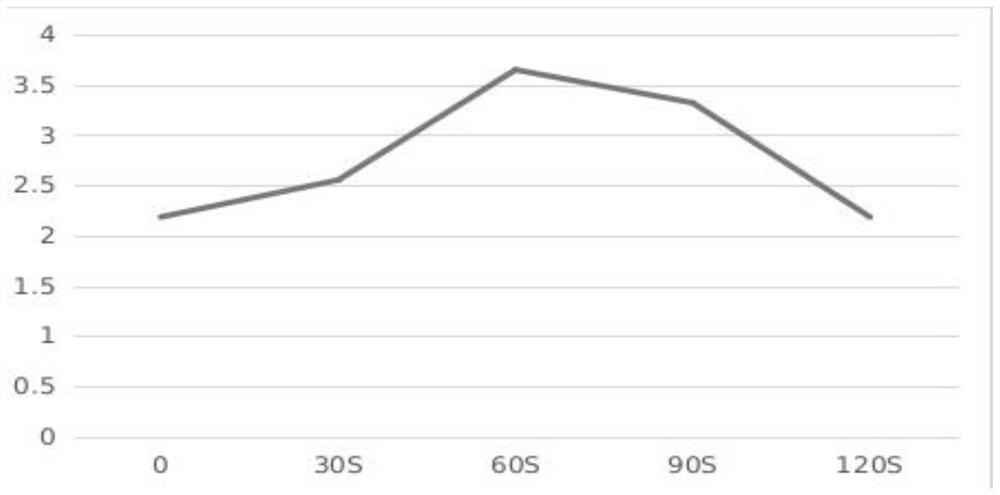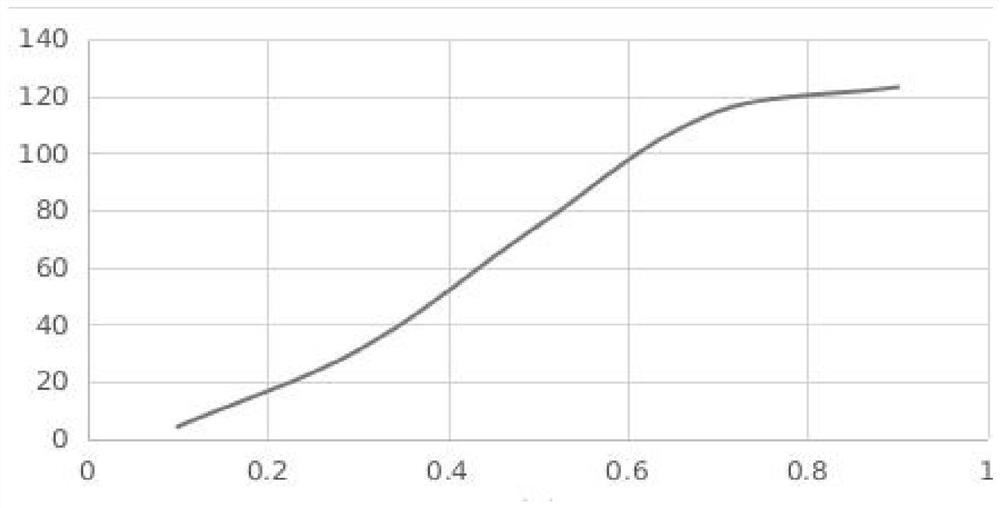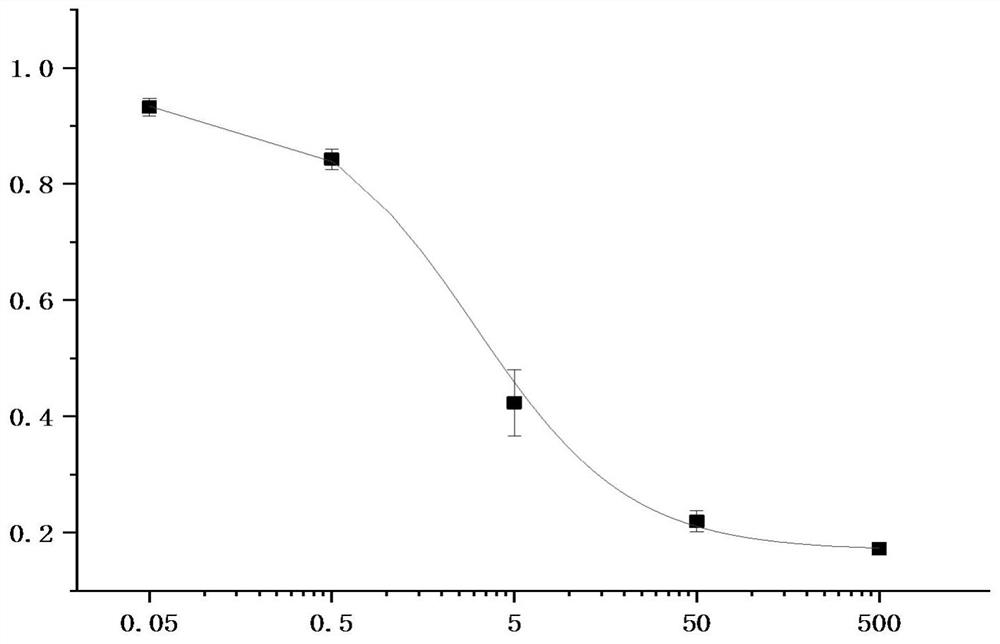Optical fiber probe and preparation method and application thereof
An optical fiber probe and optical fiber technology, applied in the field of immune detection, can solve the problems of cumbersome operation, slow speed, inability to detect on-site, etc., and achieve the effect of high stability and low cost
- Summary
- Abstract
- Description
- Claims
- Application Information
AI Technical Summary
Problems solved by technology
Method used
Image
Examples
preparation example Construction
[0030] The invention provides a method for preparing an optical fiber probe, comprising the steps of:
[0031] (1) Immerse the optical fiber in a solution of 8-aminopyrene-1,3,6-trisulfonic acid trisodium salt, and react to obtain an optical fiber connected with a silanized group;
[0032] (2) Immerse the optical fiber connected with the silyl group in the N,N'-disuccinimidyl carbonate solution, and react to obtain the optical fiber carrying the bifunctional group;
[0033] (3) Dip the optical fiber carrying the bifunctional group into the antigen solution, and react to obtain the optical fiber probe.
[0034] In the present invention, the optical fiber is a silica optical fiber.
[0035] In the present invention, the optical fiber is a corrosion-removed optical fiber.
[0036] In the present invention, the preparation method of the de-corroded optical fiber is: immerse one end of the de-coated optical fiber in a hydrofluoric acid solution with a mass fraction of 25-35%, rea...
Embodiment 1
[0071] The preparation of embodiment 1 fiber optic probe
[0072] Take the silica optical fiber, use a blade to remove 3cm of fiber coating from either end, soak it in 30% hydrofluoric acid solution for 4 hours, and clamp it out immediately when the core diameter of the fiber is corroded from 600 μm to 220 μm. Ultrapure water removes impurities, removes remaining coatings, and obtains de-corroded optical fibers. Soak the corroded optical fiber in a mixed solution of concentrated sulfuric acid and hydrogen peroxide with a volume ratio of 3:1 for 25 minutes, take it out and ultrasonically clean it three times with ultrapure water, and dry it in a drying oven at 110°C for 3 hours. Then soak the optical fiber in a toluene solution containing 2% 8-aminopyrene-1,3,6-trisulfonic acid trisodium salt at 25°C, shake it on a shaker for 1 hour, take out the optical fiber, and wash it with toluene for 3 Once, blow dry with nitrogen, and dry in a drying oven at 110°C for 1 h. Take out the...
Embodiment 2
[0073] Example 2 Preparation of fluorescently labeled fipronil antibody
[0074] Put the dialysis bag into a beaker and heat it in a microwave oven with ultrapure water for 10 minutes, replace it with fresh ultrapure water and wash it repeatedly 3 times, prepare another beaker for the dialysis clip and repeat the above process. Add 0.5mg / mL monoclonal antibody produced by the hybridoma cell line F-3F6 into the boiled dialysis bag, and dialyze in 1L of 0.15M sodium chloride solution at 25°C for 4h. Afterwards, 1 L of freshly prepared 0.15M sodium chloride solution was replaced, and dialyzed at 4°C for 12 hours. Afterwards, the dialysate was replaced with freshly prepared 1L 0.1M sodium bicarbonate solution, and after dialysis for 3 hours, the absorbance of the labeled antibody at 280 nm was measured with a UV spectrophotometer, and the total amount of labeled antibody was calculated. Then slowly add Cy5.5 solution to the purified antibody in 3 times, a total of 1mL, and react ...
PUM
| Property | Measurement | Unit |
|---|---|---|
| Concentration | aaaaa | aaaaa |
| Core diameter | aaaaa | aaaaa |
| Length | aaaaa | aaaaa |
Abstract
Description
Claims
Application Information
 Login to View More
Login to View More - R&D
- Intellectual Property
- Life Sciences
- Materials
- Tech Scout
- Unparalleled Data Quality
- Higher Quality Content
- 60% Fewer Hallucinations
Browse by: Latest US Patents, China's latest patents, Technical Efficacy Thesaurus, Application Domain, Technology Topic, Popular Technical Reports.
© 2025 PatSnap. All rights reserved.Legal|Privacy policy|Modern Slavery Act Transparency Statement|Sitemap|About US| Contact US: help@patsnap.com



